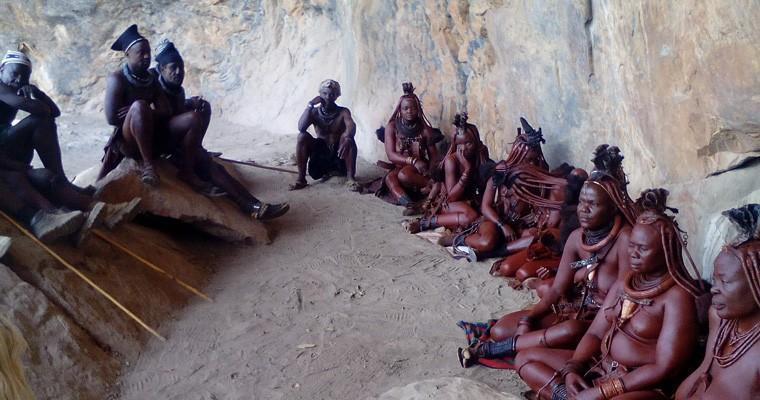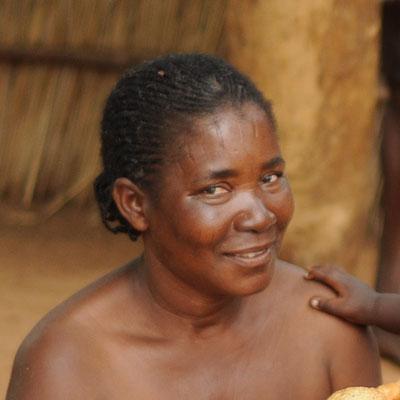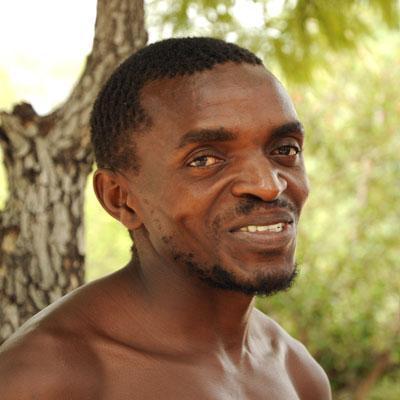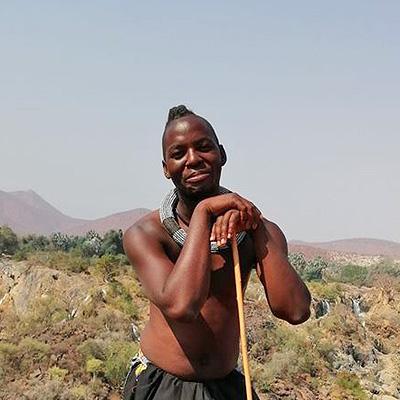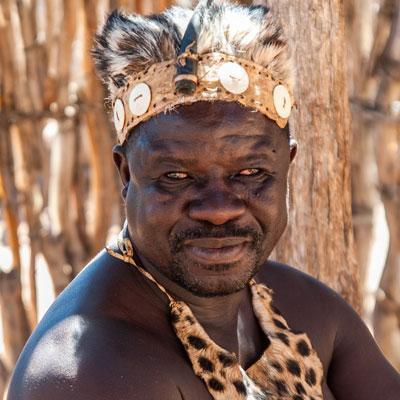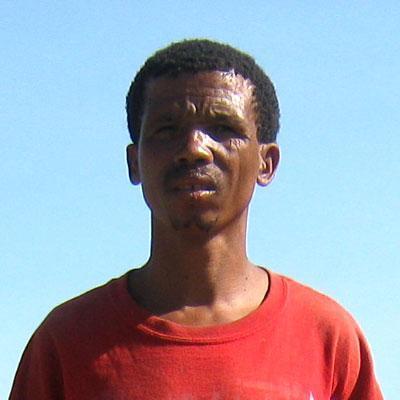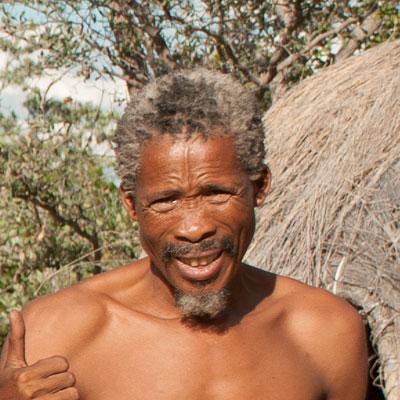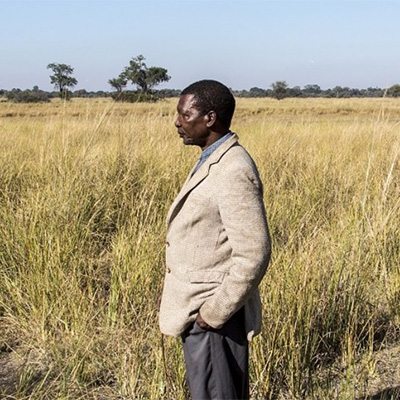Fascinating culture of the San
New Ovahimba project
On our project tour at the beginning of September, the LCFN was able to present the concept of the Living Museums to a group of Ovahimba in the north of the country. This marks the first step towards the establishment of a Living Museum.
Project report by Sebastian Dürrschmidt
On the 12th July 2015 LCFN received an e-mail from John Tjipurua, a young Herero who lives at Omungunda, north of Opuwo. He informed us that he was busy building a Living Museum with a community of Ovahimba. The idea was born when he by chance met two Ju/‘Hoansi of the Living Museum in Grashoek. Shortly afterwards he met with Werner Pfeifer in Windhoek, who shortly explained the concept to him.
When talking to John on the phone he left the impression of being very motivated and thus an excursion to Omungunda was planned. When we arrived we were heartily welcomed by John. He showed us a cave with rock paintings close to his campsite as well as a huge Baobab. We had a short briefing on the schedule for the meeting planned for the next day. John Tjipurua is a young, well-educated and very dynamic Herero, who owns a campsite at Omungunda. He is thrilled by the idea of a Living Museum and it seems that he has well understood the concept of the Living Museums.

Explaning the concept
After a short welcoming and introduction we meticulously explained the overall concept of the Living Museum the next morning (structure, aims, rules, financial implications, the role of the community and the role of LCFN). It was remarkable that a lot of questioned were posed and more clarity was demanded when it came to the distribution of finances, the concept of self-responsibility and the part that LCFN would play in the Museum. The attending community itself was a good mixture of young and old, men and women. The women were traditionally dressed whilst the men wore a mixture of traditional and modern garments, but were well aware of this and were comfortable with our concept of traditional authenticity (no modern influences in the museum/ representation of the culture before the European influence).

After the introduction of the concept and the answering of al questions posed there was time for two short performances:
The blowing of a traditional oryx horn trumpet
Traditional Dances in the Omungunda Cave
Activities and museum site inspection
After a lunch break we visited the potential site of the Living Museum. Four huts had already been built. The site is situated between mopane trees at the slope of a little hill, but unfortunately it offers little shade. The entrance leads past a unattractive stone cottage, so not everything is perfect yet, but there is lots of room for improvement and with the imput of the community a beautiful museum can be established. The problems (shade, hut) were discussed and the following solutions were proposed: the stone hut could easily be removed and the site of the museum could be relocated a bit further away where more shade is available.

Additionally shade structures will be built which will also serve as traditional storage of grains. We also discussed the idea of building a great hut, which traditionally belongs to the main wife of the tribal chief. The building of such a hut, which is significantly different from all the other, smaller huts of the other wifes has been capruted in the documentary on the Ovahimba filmed by Eberhard von Koenen in the 1950s. This documentary will assist the community to reconstruct such a hut.
After the site inspection possible activities demonstrated in an Ovahimba Museum were discussed. The community was based to bring in their ideas on what could be interesting for visitors. These were discussed and LCFN gave their own ideas based on experiences with other museums. It was a lively discussion supported by a short competition of skills between two of the men:
Finally further steps to be taken were discussed. The Museum village has to be completed as well as all clothes, especially for the men. Afterwards the first activities should be initiated especially some which serve the overall development of the Museum (blacksmith for the forging of weapons and tools / tannery for the production of leather, etc.)
When you subscribe to the blog, we will send you an e-mail when there are new updates on the site so you wouldn't miss them.



















